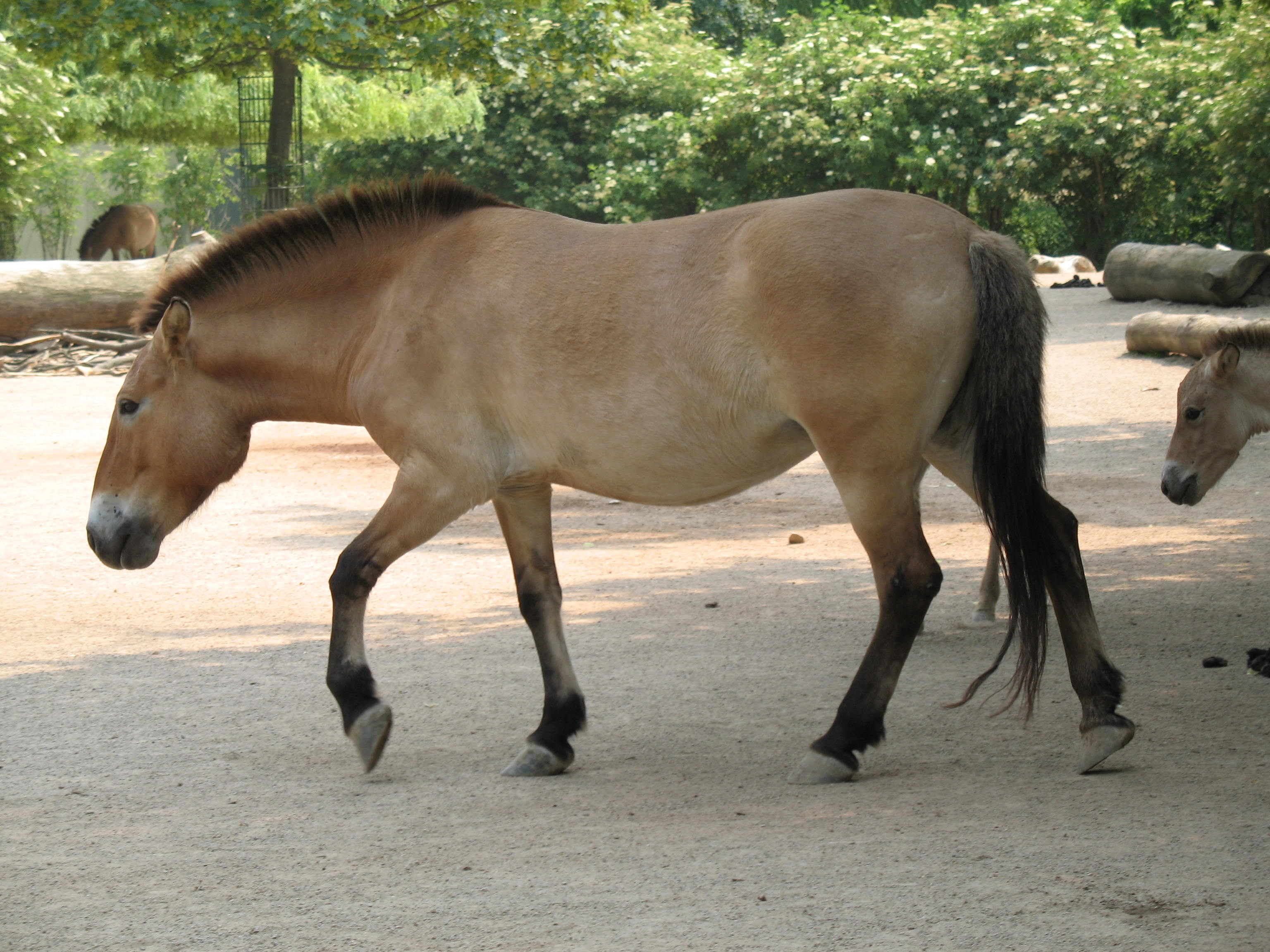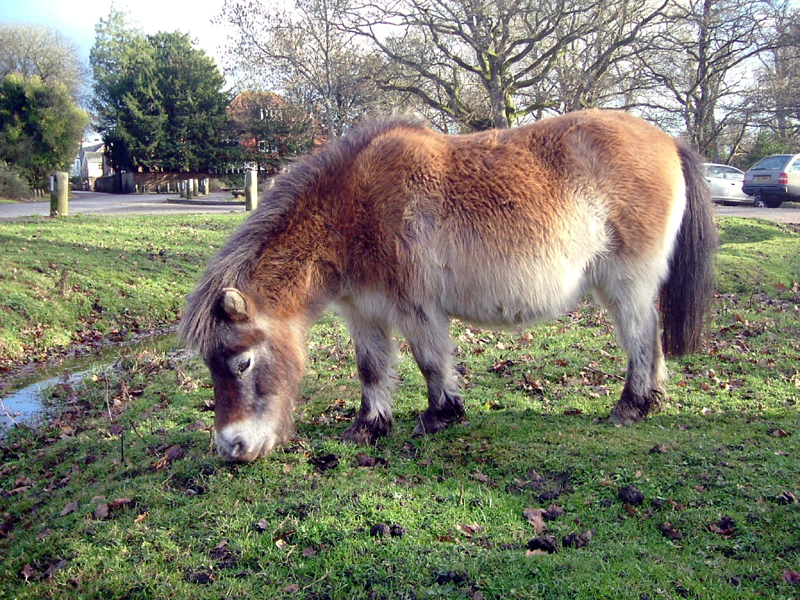|
Takhi
Przewalski's horse (, , (Пржевальский ), ) (''Equus ferus przewalskii'' or ''Equus przewalskii''), also called the takhi, Mongolian wild horse or Dzungarian horse, is a rare and endangered horse originally native to the steppes of Central Asia. It is named after the Russian geographer and explorer Nikolay Przhevalsky. Once extinct in the wild, it has been reintroduced to its native habitat since the 1990s in Mongolia at the Khustain Nuruu National Park, Takhin Tal Nature Reserve, and Khomiin Tal, as well as several other locales in Central Asia and Eastern Europe. Several genetic characteristics of Przewalski's horse differ from what is seen in modern domestic horses, indicating neither is an ancestor of the other. For example, the Przewalski has 33 chromosome pairs, compared to 32 for the domestic horse. Their ancestral lineages split from a common ancestor between 38,000 and 160,000 years ago, long before the domestication of the horse. Przewalski's horse was long ... [...More Info...] [...Related Items...] OR: [Wikipedia] [Google] [Baidu] |
Khustain Nuruu National Park
Hustai National Park (), located in the Khustai Mountains (, lit. ''Birch Mountains'') of Töv Province (Aimag), is a national park of Mongolia. It is also known as Khustain Nuruu National Park. The Tuul River runs through the park. History The Mongolian Government declared Hustai National Park as a Specially Protected Area in 1993, one year after the initiation of the reintroduction project of the Takhi (Przewalski's horse) to the Hustain Nuruu. The HNP extends through the Khentii Mountains and includes the western edge of the Mongolian steppe at the boundaries of Altanbulag, Argalant and Bayankhangai Soums of Töv Province. The park is about 100 km from the capital city of Ulaanbaatar to the west. The HNP covers 50,600 ha land which is home to 459 species of vascular plants, 85 species of lichens, 90 species of moss and 33 species of mushrooms. 44 species of mammals have been recorded, including Altai wapiti, Mongolian gazelle, roe deer, wild boar, wild sheep, ... [...More Info...] [...Related Items...] OR: [Wikipedia] [Google] [Baidu] |
Mustang (horse)
The mustang is a free-roaming horse of the Western United States, descended from horses brought to the Americas by the Spanish. Mustangs are often referred to as wild horses, but because they are descended from once- domesticated animals, they are actually feral horses. The original mustangs were Colonial Spanish horses, but many other breeds and types of horses contributed to the modern mustang, now resulting in varying phenotypes. Some free-roaming horses are relatively unchanged from the original Spanish stock, most strongly represented in the most isolated populations. In 1971, the United States Congress recognized that "wild free-roaming horses and burros are living symbols of the historic and pioneer spirit of the West, which continue to contribute to the diversity of life forms within the Nation and enrich the lives of the American people". The free-roaming horse population is managed and protected by the U.S. Bureau of Land Management (BLM). Controversy surround ... [...More Info...] [...Related Items...] OR: [Wikipedia] [Google] [Baidu] |
Paul Matschie
Paul Matschie Paul Matschie (11 August 1861, Brandenburg an der Havel – 7 March 1926, Friedenau) was a German zoologist. He studied mathematics and natural sciences at the Universities of Halle and Berlin, afterwards working as an unpaid volunteer at the Berlin Zoological Museum under Jean Cabanis (1816–1906). In 1892 he was in charge of the department of mammals at the museum, later becoming a curator (1895), and in 1902 attaining the title of professor. In 1924 he was appointed second director at the museum. During the years 1891–93, he described 11 new species of reptiles. A species of gecko, ''Hemidactylus matschiei The Togo leaf-toed gecko (''Hemidactylus matschiei'') is a species of gecko, a lizard in the family Gekkonidae. The species is endemic to West Africa. Etymology The specific name, ''matschiei'', is in honor of German zoologist Paul Matschie.Beo ...'' ( Tornier, 1901), is named in his honor. Matschie organized the fifth International Congress of ... [...More Info...] [...Related Items...] OR: [Wikipedia] [Google] [Baidu] |
Taxonomy (biology)
In biology, taxonomy () is the scientific study of naming, defining ( circumscribing) and classifying groups of biological organisms based on shared characteristics. Organisms are grouped into taxa (singular: taxon) and these groups are given a taxonomic rank; groups of a given rank can be aggregated to form a more inclusive group of higher rank, thus creating a taxonomic hierarchy. The principal ranks in modern use are domain, kingdom, phylum (''division'' is sometimes used in botany in place of ''phylum''), class, order, family, genus, and species. The Swedish botanist Carl Linnaeus is regarded as the founder of the current system of taxonomy, as he developed a ranked system known as Linnaean taxonomy for categorizing organisms and binomial nomenclature for naming organisms. With advances in the theory, data and analytical technology of biological systematics, the Linnaean system has transformed into a system of modern biological classification intended to reflect the ... [...More Info...] [...Related Items...] OR: [Wikipedia] [Google] [Baidu] |
Genetic Divergence
Genetic divergence is the process in which two or more populations of an ancestral species accumulate independent genetic changes (mutations) through time, often leading to reproductive isolation and continued mutation even after the populations have become reproductively isolated for some period of time, as there isn’t genetic exchange anymore. In some cases, subpopulations living in ecologically distinct peripheral environments can exhibit genetic divergence from the remainder of a population, especially where the range of a population is very large (see parapatric speciation). The genetic differences among divergent populations can involve silent mutations (that have no effect on the phenotype) or give rise to significant morphological and/or physiological changes. Genetic divergence will always accompany reproductive isolation, either due to novel adaptations via selection and/or due to genetic drift, and is the principal mechanism underlying speciation. On a molecular gene ... [...More Info...] [...Related Items...] OR: [Wikipedia] [Google] [Baidu] |
American Society Of Mammalogists
The American Society of Mammalogists (ASM) was founded in 1919. Its primary purpose is to encourage the study of mammals, and professions studying them. There are over 4,500 members of this society, and they are primarily professional scientists who emphasize the importance of public policy and education. There are several ASM meetings held each year and the society manages several publications such as the '' Journal of Mammalogy'', ''Special Publications'', '' Mammalian Species'', and ''Society Pamphlets''. The best known of these is the ''Journal of Mammalogy''. The ASM also maintains ''The Mammal Image Library'' which contains more than 1300 mammal slides. A president, vice president, recording secretary, secretary-treasurer, and journal editor are all elected by the members to be officers of the society. In addition, ASM is composed of thirty one committees, including the Animal Care and Use Committee, the Conservation Awards Committee, the International Relations Committee, ... [...More Info...] [...Related Items...] OR: [Wikipedia] [Google] [Baidu] |
Tarpan
The term tarpan (''Equus ferus ferus'') refers to free-ranging horses of the Russian steppe from the 18th to the 20th century. It is generally unknown whether those horses represented genuine wild horses, feral domestic horses or hybrids. The last individual believed to be a tarpan died in captivity in the Russian Empire during 1909. Beginning in the 1930s, several attempts were made to develop horses that looked like tarpans through selective breeding, called " breeding back" by advocates. The breeds that resulted included the Heck horse, the , and a derivation of the Konik breed, all of which have a primitive appearance, particularly in having the grullo coat colour. Some of these horses are now commercially promoted as "tarpans", although such animals are only domestic breeds and not the wild animal themselves. Name and etymology The name "tarpan" or "tarpani" derives from a Turkic language (Kazakh or Kyrgyz) name meaning "wild horse". The Tatars and the Cossacks disting ... [...More Info...] [...Related Items...] OR: [Wikipedia] [Google] [Baidu] |
Horse
The horse (''Equus ferus caballus'') is a domesticated, one-toed, hoofed mammal. It belongs to the taxonomic family Equidae and is one of two extant subspecies of ''Equus ferus''. The horse has evolved over the past 45 to 55 million years from a small multi-toed creature, '' Eohippus'', into the large, single-toed animal of today. Humans began domesticating horses around 4000 BCE, and their domestication is believed to have been widespread by 3000 BCE. Horses in the subspecies ''caballus'' are domesticated, although some domesticated populations live in the wild as feral horses. These feral populations are not true wild horses, as this term is used to describe horses that have never been domesticated. There is an extensive, specialized vocabulary used to describe equine-related concepts, covering everything from anatomy to life stages, size, colors, markings, breeds, locomotion, and behavior. Horses are adapted to run, allowing them to quickly escape predators ... [...More Info...] [...Related Items...] OR: [Wikipedia] [Google] [Baidu] |
Trinomial Nomenclature
In biology, trinomial nomenclature refers to names for taxa below the rank of species. These names have three parts. The usage is different in zoology and botany. In zoology In zoological nomenclature, a trinomen (), trinominal name, or ternary name refers to the name of a subspecies. Examples are ''Gorilla gorilla gorilla'' ( Savage, 1847) for the western lowland gorilla (genus ''Gorilla'', species western gorilla), and ''Bison bison bison'' (Linnaeus, 1758) for the plains bison (genus ''Bison'', species American bison). A trinomen is a name with three parts: generic name, specific name and subspecific name. The first two parts alone form the binomen or species name. All three names are typeset in italics, and only the first letter of the generic name is capitalised. No indicator of rank is included: in zoology, subspecies is the only rank below that of species. For example: "''Buteo jamaicensis borealis'' is one of the subspecies of the red-tailed hawk (''Buteo jamaicen ... [...More Info...] [...Related Items...] OR: [Wikipedia] [Google] [Baidu] |
Primitive Markings
Primitive markings are a group of hair coat markings and qualities seen in several equine species, including horses, donkeys, and asses. In horses, they are associated with primitive breeds, though not limited to such breeds. The markings are particularly associated with the dun coat color family. All dun horses possess at least the dorsal stripe, but the presence of the other primitive markings varies. Other common markings may include horizontal striping on the legs, transverse striping across the shoulders, and lighter guard hairs along the edges of a dark mane and tail. Origin The dun coat and attendant primitive or "dun factor" markings reflect the wild type coat and are observed in all equine species. Some cave paintings depict horses as being dun and with the primitive markings. The Przewalski's horse is dun-colored with primitive markings. So, too, are horse breeds such as the Konik and the Heck horse, "bred back" to resemble the now-extinct tarpan The term tarpa ... [...More Info...] [...Related Items...] OR: [Wikipedia] [Google] [Baidu] |
Pangaré
Pangaré is a coat trait found in some horses that features pale hair around the eyes and muzzle and underside of the body. These pale areas can extend up to the flanks, throat and chest, behind the elbows, in front of the stifle, and up the buttock. Animals with the pangaré trait are sometimes called "mealy" or "light-pointed". The color of these lighter areas depends on the underlying color and ranges from off-white to light tan. This type of coloration is most often found in breeds such as the Fjord horse, Exmoor Pony, and Haflinger. Wild equids like the Przewalski's Horse, Onager, African Wild Ass, Kiang as well as the domestic Donkey exhibit pangaré as a rule. Pangaré is thought to be a type of protective countershading. Horse foals are often born with "foal pangaré" or light points, especially over black haired areas, which they lose when they shed their foal coats. At one time, the seal brown coat color was hypothesized to occur from the action of pangaré on a ... [...More Info...] [...Related Items...] OR: [Wikipedia] [Google] [Baidu] |








